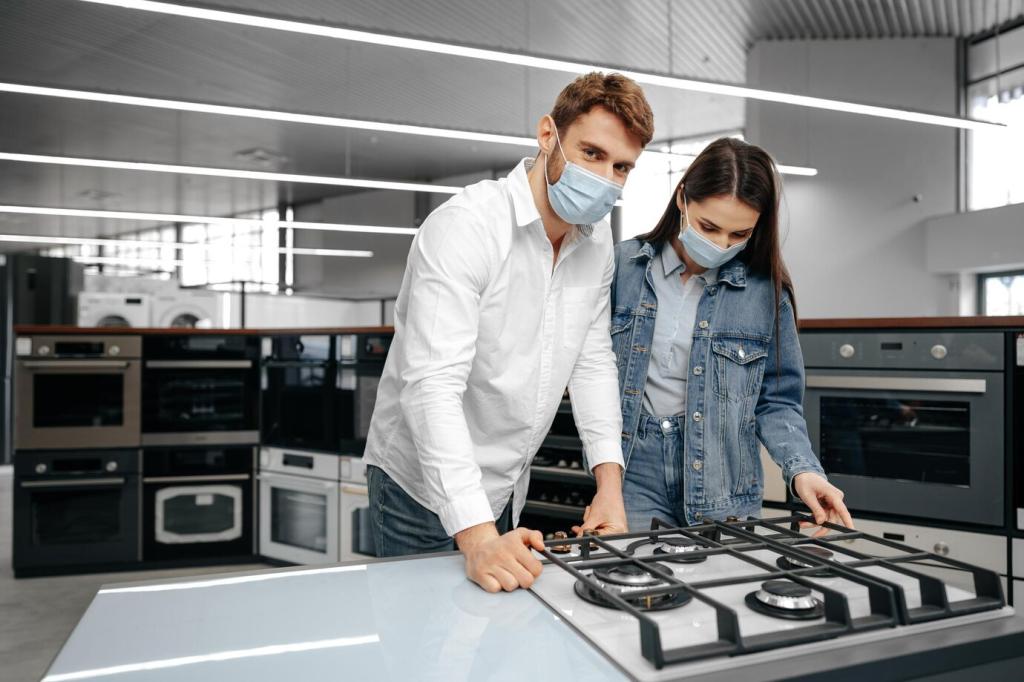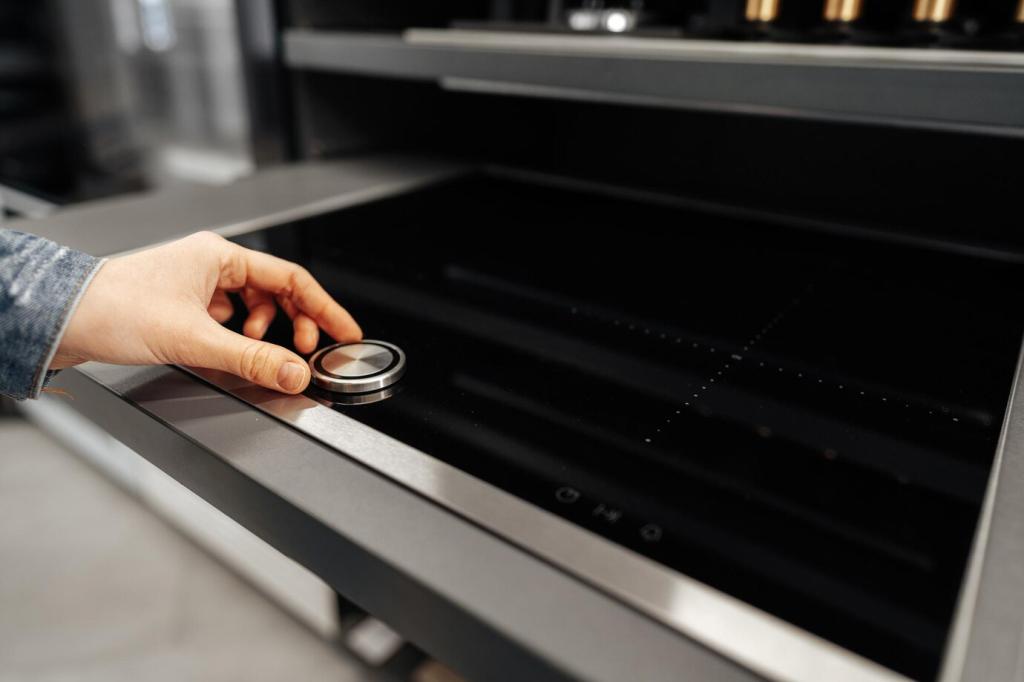Live Safely with Your Home Appliances
Know Your Power: Ratings, Circuits, and Loads
Every appliance label tells a story. Watts reveal energy use, amps indicate current draw, and volts show supply needs. Matching these numbers to your circuits prevents trips, overheating, and surprise failures. Snap a photo of labels today and ask us questions—let’s decode them together.


Know Your Power: Ratings, Circuits, and Loads
Most household circuits have limits you should respect. Space out high-demand appliances, avoid running multiple heat-generating devices together, and never daisy-chain power strips. Balanced loads mean cooler wires, fewer nuisance trips, and longer appliance life. Share how you distribute devices across rooms for safer setups.
Smart Setup: Placement, Ventilation, and Moisture Control
Moisture creates shock hazards. Keep kettles, toasters, and coffee makers away from sinks and splashes. Use GFCI protection near water, and never touch plugs with wet hands. If a device gets wet, unplug it safely first, then let it dry fully. Tell us your kitchen layout challenges for tailored tips.
Cords, Plugs, and Outlets: Caring for Connections
01
Look for cracked insulation, bent prongs, warm plugs, or frayed spots near strain reliefs. Replace damaged cords immediately—tape is not a fix. Avoid running cords under rugs where heat traps and wear goes unseen. Post a monthly reminder and share your best inspection routine with our community.
02
Always grasp the plug, not the cord. Pulling on the cable loosens internal connections and invites arcing. If a plug feels loose in the outlet, stop using it and replace the outlet. Teach kids this simple habit early. What household rule helps your family remember safe unplugging?
03
GFCI outlets cut power fast when a ground fault occurs, especially near sinks and outdoors. AFCI protection helps detect dangerous arcing. Tamper-resistant outlets add spring-loaded shutters for child safety. Ask where these belong in your home, and subscribe for a room-by-room upgrade checklist.
Everyday Habits That Prevent Hazards

Unplug countertop appliances when not in use, keep cords away from hot surfaces, and wipe spills before plugging or switching on. Let devices cool before storing. Check microwave turntables for smooth motion to avoid motor strain. Share your favorite kitchen safety reminder on our page today.
Kids, Guests, and Pets: A Culture of Safety
01
Simple Rules Kids Remember
Teach children: dry hands before touching switches, ask before plugging things in, and never poke objects into outlets. Demonstrate safe habits, and praise good choices. Tamper-resistant outlets add an extra layer. What kid-friendly rhyme or reminder works in your household? Share it with other parents.
02
Pet-Proof Power and Chewable Cords
Keep cords off the floor, use cord covers, and secure power strips where paws cannot reach. Avoid dangling chargers near beds or sofas. Pets explore with teeth and claws, so prevention is key. Tell us which cord cover or organizer has survived your most determined chewer.
03
Guest-Ready Safety Check
Before guests arrive, clear pathways, secure loose cables, and explain which switches control outlets. Provide a safe spot for chargers to avoid overloading entryway strips. Post the Wi‑Fi password near a dedicated charging station. What hosting trick keeps your outlets safe and your guests happy?
Smell Burning or See Smoke?
Turn off and unplug the appliance if it is safe to do so. Cut power at the breaker if unsure. Ventilate the room, keep combustibles away, and never ignore recurring odors. Document what happened and time of day. Comment with your questions, and we’ll help troubleshoot patterns.
If Someone Receives a Shock
Do not touch the person if they are still connected—cut power first. Call emergency services for significant shocks, burns, or lingering symptoms. Keep GFCI protection in areas with water to reduce risk. Share this guidance with family, and subscribe for a printable emergency checklist.
After the Incident: Repair or Replace?
Inspect cords, plugs, and outlets. Replace damaged parts with manufacturer-approved components, and involve a licensed electrician for wiring concerns. Retire appliances that repeatedly trip breakers or run unusually hot. Tell us what you discovered after a close call, and help others learn from your experience.
